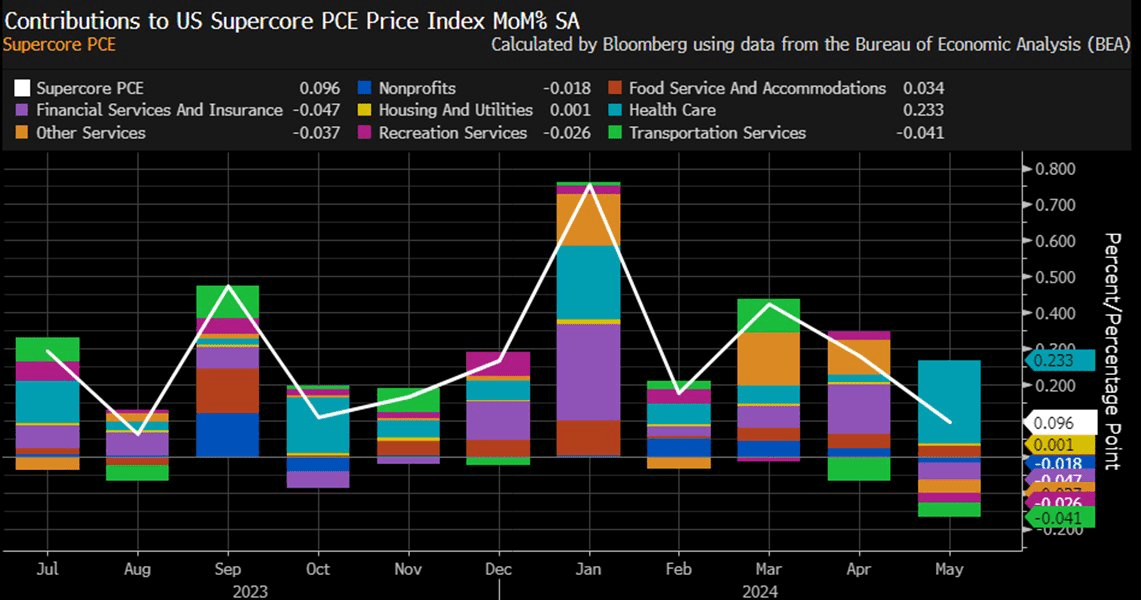Table of Contents
- Key Takeaways
- Understanding Ethereum Price Fluctuations
- Factors affecting prices
- Supply and demand
- Market sentiment
- Competition
- Regulatory environment
- Navigating Ethereum's Volatile Market
- Strategies for buying and selling
- Monitoring market trends
- Importance of research
- Potential risks and rewards
- The Technical Functionality of Ethereum
- Blockchain technology
- Smart contracts
- Decentralization
- What sets Ethereum apart from other cryptocurrencies
- Conclusion
Are you trying to understand the ups and downs of Ethereum? You're not alone. The Ethereum price can go up or down because of many things like demand, new technology, changes in rules, and how people feel about the market.
This article will show you how to deal with these price changes and explain how Ethereum works. Get ready to learn more.
Key Takeaways
-
Ethereum's price changes due to supply and demand, market feelings, competition, and new rules. Understanding these factors helps investors make smart choices.
-
Smart contracts on Ethereum run by themselves when conditions are met. This technology lets people do business directly without needing someone in the middle.
-
Ethereum works on a system that no single person controls. This makes it safe from being changed unfairly and keeps transactions open for everyone to see.
-
Keeping an eye on how people feel about Ethereum can show where its price might go next. Tools that check social media and news help investors pick the best times to buy or sell.
-
The laws around cryptocurrencies like Ethereum can affect its price. Staying updated on these changes is important for making good investment decisions.
Understanding Ethereum Price Fluctuations
Ethereum's price fluctuates due to various factors like supply and demand, market sentiment, competition, and regulatory changes. These fluctuations can present both risks and opportunities for investors.
Factors affecting prices
Supply and demand play a crucial role in determining the price of Ethereum. As more people want to buy Ethereum than sell it, the price goes up. On the other hand, if more people want to sell Ethereum than buy it, the price drops.
This basic economic principle affects how much you'll pay for Ethereum at any given time.
Market sentiment also has a big impact on Ethereum prices. News about technological developments or regulatory changes can make investors feel optimistic or pessimistic about the future of cryptocurrency.
These feelings influence their buying and selling decisions, which in turn affect the market price of Ethereum. Competition from other cryptocurrencies and overall market conditions also contribute to fluctuations in Ethereum's value.
Supply and demand
Market demand and technological developments are crucial factors influencing Ethereum's price. The balance between the number of people looking to buy and sell Ethereum, along with advancements in its underlying technology, directly impacts its value.
Regulatory changes and overall market conditions also play a significant role in determining the price of Ethereum. These complex interplays make predicting Ethereum's price a challenging task for investors aiming to navigate the everchanging cryptocurrency landscape.
Moving on to "Navigating Ethereum's Volatile Market".
Market sentiment
Investors' attitudes and emotions towards Ethereum impact its price movement. Sentiment analysis tools monitor social media, news, and forums to gauge market sentiment. Positive sentiments can drive demand and increase prices, while negative sentiments may trigger sell-offs.
Market sentiment is a crucial factor influencing the everchanging world of digital currency, with investors closely analyzing it for potential trading opportunities. Regulatory changes and technological developments also intertwine with market sentiment to influence Ethereum's price volatility.
Amidst the complexities of cryptocurrency markets, market sentiment plays a pivotal role in determining Ethereum's price movements. As investors seek to navigate this volatile landscape, understanding and monitoring market sentiment becomes essential for making informed investment decisions.
Competition
Understanding Ethereum's price dynamics is crucial in the face of competition from other cryptocurrencies. Market demand, technological developments, and regulatory changes all play a role in shaping Ethereum's competitive position.
Technological innovation and market movements are key factors influencing Ethereum's ability to stay ahead in the highly competitive cryptocurrency landscape.
Ethereum's journey is marked by its response to evolving market demands and competition from other digital assets. The dynamic interplay between market forces and technological advancements underscores the challenges imposed by competitors within the cryptocurrency realm.
Regulatory environment
Market regulations have a significant impact on the price of Ethereum. Regulatory changes and overall market conditions play a crucial role in shaping the value of Ethereum, making it essential for investors to stay informed about any legal developments.
Market demand factors and technological advancements also interact with regulatory policies to influence the price of Ethereum, creating a complex landscape that requires careful navigation in the realm of cryptocurrency investment.
The regulatory environment significantly impacts the ever-evolving world of Ethereum. As market demand and technological innovations continue to shape its trajectory, understanding how regulations intersect with these factors is vital for predicting potential price movements and making informed investment decisions.
Navigating Ethereum's Volatile Market
Navigating Ethereum's volatile market requires strategic buying and selling, closely monitoring trends, and conducting thorough research. Potential risks and rewards should be carefully assessed before making decisions in this dynamic market.
Strategies for buying and selling
-
Research the market demand and technological developments that influence Ethereum's price.
-
Monitor price trends diligently to identify optimal buying and selling opportunities.
-
Stay informed about regulatory changes and overall market conditions impacting Ethereum.
-
Utilize prediction models to forecast potential market movements.
-
Understand the complexities of Ethereum's price dynamics to make informed decisions.
-
Consider the potential risks and rewards associated with buying and selling Ethereum.
-
Implement tailored strategies based on thorough analysis of market factors.
-
Stay abreast of blockchain innovations and their implications for Ethereum's price fluctuations.
-
Evaluate short - term forecasts and expert predictions while formulating buying and selling strategies.
-
Continuously adapt your approach based on the ever - evolving nature of Ethereum's price fluctuations.
Monitoring market trends
-
Keep a close eye on price movements and fluctuations to spot trends.
-
Monitor trading volumes and liquidity for Ethereum across various exchanges.
-
Stay updated on new developments and upgrades in the Ethereum network.
-
Analyze historical price data to identify patterns and potential future movements.
-
Follow industry news and expert opinions for insights into market sentiment.
-
Watch out for regulatory changes that could impact the price of Ethereum.
-
Use technical analysis tools like moving averages, MACD, RSI to gauge market trends.
-
Keep an eye on social media chatter and community discussions related to Ethereum.
-
Explore correlation with Bitcoin and other major cryptocurrencies for broader market trends.
-
Pay attention to any significant events or milestones in the cryptocurrency space that could affect Ethereum's price.
Importance of research
Research plays a crucial role in understanding the ever-evolving world of Ethereum. Analyzing market trends, regulatory impact, and technological developments is vital for making informed decisions.
By utilizing prediction models and forecasting market trends, investors can navigate the complexities of Ethereum's price fluctuations with greater confidence. Therefore, staying informed through meticulous research is essential to unlocking the secrets of this dynamic cryptocurrency market.
The Technical Functionality of Ethereum
Potential risks and rewards
Understanding Ethereum's volatile nature is crucial in assessing potential risks and rewards. The dynamic market demand, technological developments, regulatory changes, and overall market conditions can lead to considerable price fluctuations.
Investors must navigate the complex interplay of these factors while analyzing price trends, predicting market movements, and exploring blockchain innovation to make informed decisions.
However, this journey also presents exciting opportunities for those aiming to capitalize on Ethereum's ever-evolving landscape by strategically leveraging its potential rewards amidst the inherent risks.
The Technical Functionality of Ethereum
Ethereum's technical functionality includes blockchain technology, smart contracts, and decentralization. To learn more about how these features shape the world of Ethereum, dive into our blog!
Blockchain technology
Blockchain technology revolutionizes the way data is stored and distributed. It operates as a decentralized digital ledger that records transactions across multiple computers in a secure, transparent, and tamper-resistant manner.
Each block of data is linked to previous blocks, creating an irreversible chain. This system ensures the integrity of the information stored within it by making it nearly impossible to alter or hack.
Blockchain technology not only underpins cryptocurrencies like Ethereum but also has applications in various industries, including finance, healthcare, supply chain management, and more.
Smart contracts are self-executing agreements with the terms directly written into code on a blockchain. They automatically enforce and facilitate the performance or negotiation of a contract without third-party intermediaries.
This feature makes transactions traceable, transparent, and irreversible while reducing reliance on traditional legal systems for enforcement. The decentralized nature of Ethereum's blockchain provides increased security against fraud and censorship while fostering trust among parties engaging in transactions on its platform.
Smart contracts
Smart contracts are self-executing digital contracts that run on the Ethereum blockchain. They automatically enforce and facilitate the performance of credible transactions without third parties.
These contracts use blockchain technology to verify, facilitate, or enforce the negotiation or performance of a contract, providing security and reducing transaction costs. Smart contracts are designed to enhance transparency and reduce fraud by automating complex processes in a tamper-proof manner through code execution.
Ethereum's smart contracts provide an innovative way of conducting secure transactions, revolutionizing traditional contract processes with their efficiency and reliability. The use of smart contracts has paved the way for new decentralized applications (dApps) in various sectors such as finance, real estate, supply chain management, voting systems, and more.
Decentralization
Ethereum operates on a decentralized network, meaning there is no central authority governing it. This setup allows transactions to be verified without the need for a third party, promoting transparency and security.
Decentralization also makes Ethereum resistant to censorship and tampering, providing users with greater control over their assets. The blockchain technology underpinning Ethereum enables smart contracts to be executed automatically once predefined conditions are met, revolutionizing traditional business processes and transactions.
What sets Ethereum apart from other cryptocurrencies is its focus on decentralized applications (dApps). This innovative approach not only enhances user experience but also fosters inclusivity by allowing developers worldwide to contribute to the platform’s growth.
What sets Ethereum apart from other cryptocurrencies
Ethereum stands out from other cryptocurrencies due to its innovative use of smart contracts, which are self-executing agreements with the ability to automate processes without intermediaries.
This unique feature sets Ethereum apart by enabling a wide range of applications beyond simple transactions, allowing for the development and execution of complex decentralized applications (dApps) on its platform.
The Ethereum network is not only a digital currency but also a robust infrastructure for creating and deploying diverse blockchain-based solutions, making it a versatile and dynamic player in the world of cryptocurrency.
Conclusion
Ethereum's journey is marked by price fluctuations and anticipation surrounding its evolution. Understanding market volatility and the technical functionality of Ethereum are crucial for navigating the cryptocurrency landscape.
Investors seeking to make informed decisions must monitor trends, conduct research, and develop strategies for buying and selling in this everchanging digital realm.
Disclaimer: This article is provided for informational purposes only. It is not offered or intended to be used as legal, tax, investment, financial, or other advice.
Investment Disclaimer











